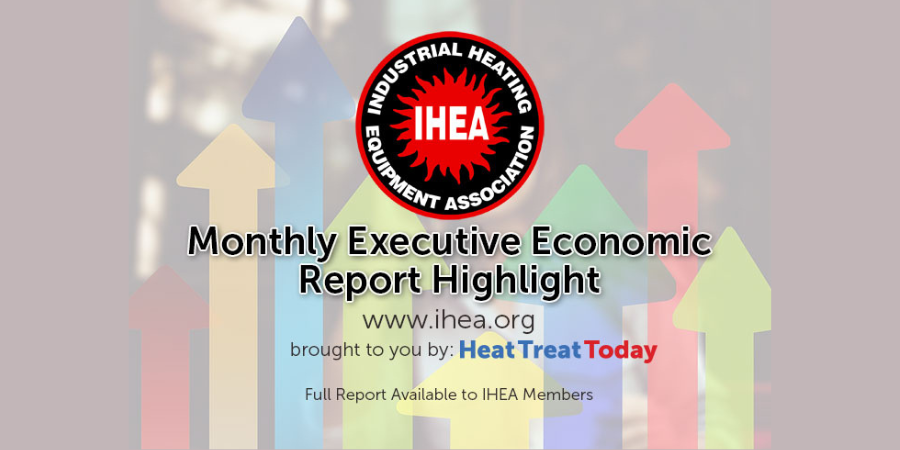Rather than mirror the doom and gloom projections from the media, this economic report does not project the 1980s to our present situation. The monthly Industrial Heating Equipment Association’s (IHEA) Executive Economic Summary released in May remains proactive, warning against statements of doom and gloom, while recognizing three very real drivers of economic concern: inflation, labor, demand.

new orders the influence on the overall economy is very positive.”

The first driver of economic concern is consistent with the report released in March: inflation. Currently, the two reasons can be attributed to war in the Ukraine as sanctions on oil have been placed on the third largest oil producer, and supply chain breakdown due to the pandemic. The latter continues to be exacerbated as China has gone into fierce lockdowns. “The loss of the world’s third largest oil and gas producer,” the report continues, “sent prices spiking and there was a similar reaction when it comes to food as this part of the world produced 25% of the world’s wheat.”
The second driver is also familiar — the need for labor and combatting labor costs. While not unanticipated, the increasing demand for skilled workers indicates that we have not properly prepared for this need. In fact, the report asserts that “[there] has been no concentrated effort to train the needed workforce, no reform of immigration, [and] no move to change the retirement age.” This means that skilled employees have more bargaining power as companies — not workers — compete to meet their need.

Executive Director
IHEA
Lastly, the driver of economic concern is high consumer demand in a time of shortage. “In a time of shortage, people and businesses hoard, and that only makes the overall situation worse,” reads the report, and even though the “flood of money” offered to people during pandemic recession fueled excessive growth — nearly 6% — the overhang is mostly gone. There is still some remaining, despite inflation, to encourage spending; it is this area of demand that the Federal Reserve can directly affect if it so chooses.
Check out the full report to see specific index growth and analysis which is available to IHEA member companies. For membership information, and a full copy of the 11-page report, contact Anne Goyer, executive director of the Industrial Heating Equipment Association (IHEA). Email Anne by clicking here.







